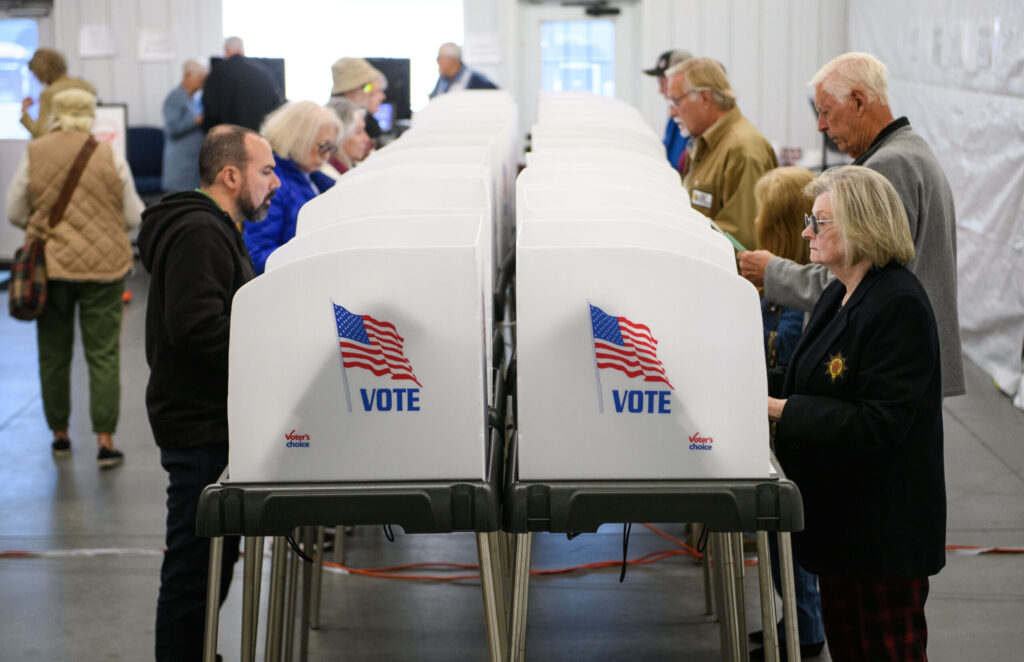
Voters make selections at their voting booths inside an early voting site. (Photo by Melissa Sue Gerrits/Getty Images)
In 2018, I conducted an analysis of state House races. In this analysis, I found that Hillary Clinton’s 2016 election results explained 90 percent of the variation in state House races and 98 percent of the variation in state Senate races.
This week, we got new evidence about why local elections might be dead in Ohio. In 2022, Republican lawmakers voted to make state Supreme Court races partisan. While Democrats have won state Supreme Court seats in nonpartisan elections, the three candidates this year with “R” next to their name won with 55.7 percent, 55.2 percent, and 55.1 percent of the vote, nearly identical to Donald Trump’s 55.2% of the statewide vote.
Sherrod Brown, who had won his first election to Senate against then-Senator Mike DeWine by 12 percentage points in 2006, reelection in 2012 by six percentage points, and a third time in 2018 by about seven points, finally lost to Trump-backed challenger Bernie Moreno by about four points. Moreno ran about five points behind Trump, but the “R” next to his name was certainly crucial.
The function of a federal system is to offer different services at different levels of government. At the federal level, national defense and basic human rights are ensured. At the state level, provision of health care and education are provided. At the local level, public safety and infrastructure is provisioned. Voters are given power to elect people at different levels of government who will ensure they get the services they need at each level of government.
This approach breaks down if state and local government is just seen as an extension of national politics. The past two speakers of the Ohio House of Representatives have left office after investigations by the FBI for corruption. One is now serving a 20-year prison sentence after being convicted in the largest racketeering case in Ohio history. What has that cost the party in power? Zero statewide offices and maybe a few state legislative offices that would have changed hands due to redistricting anyway. They still hold a supermajority in both houses. But the nationalization of politics has made the “R” next to their names more important than the actions of their members.
When I lived in Nebraska a decade ago, I saw a state government that had strong institutions built on nonpartisan elections. State legislators were elected without party affiliations on the ballot. There was no party caucusing in the capitol building: the speaker and all committee chairs were elected by a secret ballot. Even though only 17 registered Democrats were in a House of 49 members, nine of them held committee chairs the first year I was there. This was because people were elected on the merits of their trust from other members, not their partisan affiliation.
I don’t know what the cure is for Ohio’s state politics becoming subsumed by national politics. But I do think that politicians making all elections more partisan is not helping. Ballot boards, redistricting commissions, courts: what do any of these roles have to do with partisan politics? The answer is nothing. Nothing, that is, except trying to fool and manipulate the public into believing that state government doesn’t matter.
YOU MAKE OUR WORK POSSIBLE.

